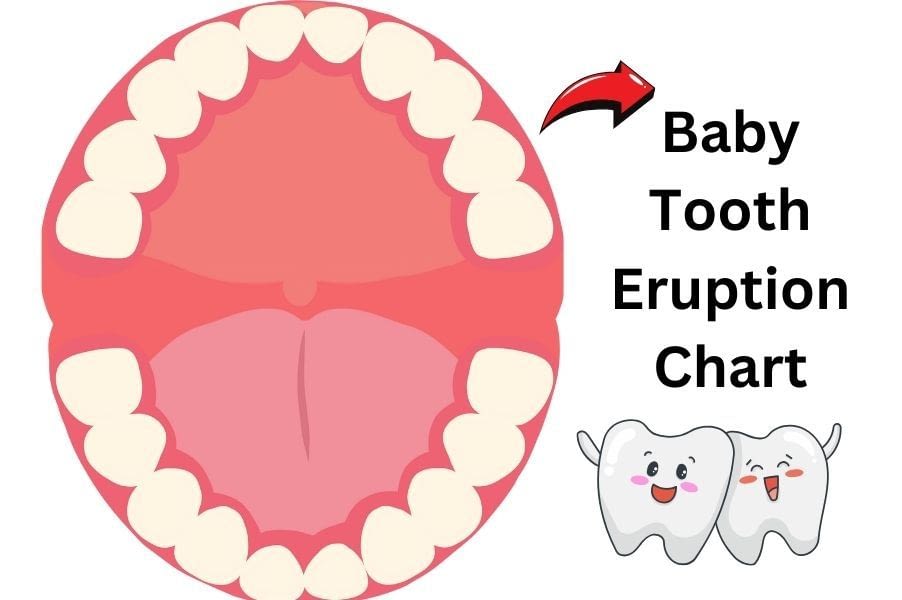Autism is a neurodevelopmental disorder that affects social interaction, communication, and repetitive behaviours. Among the myriad signs and behaviours associated with autism, one particular aspect that often piques curiosity is humming. If you want to know, Is humming a sign of autism?
This article provides the possible link between humming and autism, delves into the sensory needs of autistic children, presents coping strategies for parents, and offers expert advice and resources for support.
The Correlation between Humming and Autism
Many autistic children engage in humming, but why? Various studies suggest that humming may be a form of stimming—a repetitive behaviour used to self-stimulate their senses. This behaviour is seen in many individuals on the autism spectrum and can take different forms, such as hand-flapping, rocking, or, in this case, humming.
Humming in autistic children is often a response to sensory overwhelming or underwhelming. It serves a crucial function by providing a soothing, predictable sensory input, creating a sense of calm and helping them cope with the unpredictable sensory experiences of the world around them.
Is humming a sign of autism?
Autism encompasses various behaviours and characteristics, with each child exhibiting unique traits. If your child is humming, it’s likely a form of ‘self-stimulatory behaviour’ or ‘stimming.’
Autistic children often use stimming to manage their sensory experiences, seeking additional sensory stimulation when under-stimulated or creating a predictable sensory input when overwhelmed.
Humming can create predictability in their environment when external sensory experiences become too unpredictable or intense. It can provide comfort and focus or help them express their feelings when words are insufficient. Understanding that this self-soothing mechanism is a normal and healthy response for them is essential.
Dr Emma Goodall, an autism expert, affirms that behaviours like humming should be understood as a natural self-regulation strategy for autistic individuals. She said, “Instead of trying to stop these behaviours, it would be more beneficial to understand their function and work on strategies that ensure the individual’s sensory needs are met.”
Reasons: Why Does My Autistic Child Hum?
Each child is unique, and understanding the reasons behind your child’s humming would require learning more about their sensory experiences and triggers. Consulting with professionals such as pediatricians or occupational therapists can provide additional guidance.
Let’s find out the reasons behind your child constantly humming and singing. Constant humming may be your child’s way of dealing with sensory overload or under-stimulation. It creates a predictable and controlled auditory input to help them cope with the often overwhelming sensory world around them.
This constant humming can serve multiple purposes: it can provide comfort, aid focus, and even help express feelings when words aren’t sufficient. One parent shared the story of their son, who started humming before his autism diagnosis. They initially considered it a cute quirk until they realized he hummed more frequently during social events or loud environments. After his diagnosis, they understood this behaviour as his way of coping with sensory overwhelm.
Another parent found solace and support from an online community called “Autism Parents’ Support Network,” which provided her with resources, coping strategies, and the comfort of knowing she wasn’t alone in her journey.

Observing patterns in humming behaviour
If your child is constantly humming, observing when and where this behaviour occurs most frequently can be beneficial. Does it happen more at social gatherings, in loud environments, or when they are anxious or excited? By understanding these patterns, you can gain valuable insights into your child’s sensory experiences and what might be triggering the need for this self-soothing behaviour.
6 Possible Reasons for Constant Humming in Autistic Children
- Sensory Regulation: The child may use humming to regulate their sensory experiences. This can provide them with a comforting, predictable sound when their environment becomes too overwhelming or unpredictable.
- Communication: Humming can also act as a form of non-verbal communication. If the child is nonverbal or has difficulty expressing their thoughts and feelings with words, humming could be a way to communicate their emotions or needs.
- Self-soothing: Humming can be a self-soothing behaviour. Similar to how some people twirl their hair or tap their feet when they’re anxious, a child might hum to calm themselves down in stressful situations.
- Focus and Concentration: Some children might hum to help them concentrate on a task. The constant noise can drown out other distracting sounds and help them focus.
- Stimming: Humming is a common form of stemming, or self-stimulatory behaviour, in autistic children. Stimming is a normal behaviour that can help the child to manage their emotional and sensory experiences.
- Excitement or Joy: Sometimes, children hum when they are excited or happy. This could be why the humming happens during or after positive experiences.
9 Coping Strategies for Parents: How to reduce humming in autism?
Reducing humming in autistic children is a delicate process, as this behaviour often fulfils a crucial sensory or emotional need. The goal is not to eliminate the behaviour but to help the child find alternative, perhaps less disruptive, strategies while meeting the underlying condition. Here are some practical tips to help manage humming behaviours:
- Identifying Triggers: Observing and understanding what triggers the humming can be a pivotal starting point. This information can guide you in creating a supportive environment that minimizes these stressors.
- Creating a Sensory-Friendly Environment: You can help manage your child’s sensory input by providing a calm, structured environment. This might involve minimizing loud noises, harsh lighting, or crowded spaces.
- Introducing Alternative Stimming Strategies: If the humming is a form of stemming, you could introduce alternative forms of stimming that your child finds soothing. This could include fidget toys, weighted blankets, or soothing tactile objects.
- Using Non-verbal Communication Tools: If humming is a form of communication, introducing other non-verbal communication tools could be beneficial. This might include visual aids, sign language, or technologies designed to support communication.
- Involve your child in sensory activities: Painting, playing with sand, or baking can provide controlled sensory experiences.
- Teaching Coping Mechanisms: Consider working with a therapist to teach your child coping mechanisms, such as deep breathing exercises or mindfulness techniques, which can help them manage their sensory experiences.
- Use headphones or earplugs: If your child finds certain sounds overwhelming, noise-cancelling headphones or earplugs can be helpful.
- Consistent Routine: A consistent routine can help reduce anxiety and, in turn, the need to self-soothe through humming.
- Professional Guidance: A specialist in autism or sensory processing can provide tailored strategies and interventions to help manage constant humming.
Parents need to approach this process with patience and empathy. Finding effective strategies might involve some trial and error. It’s also crucial to accept and respect your child’s need to stim and to ensure any changes are made with their comfort and wellbeing as the top priority.
If Baby Makes Humming Noise While Breastfeeding
If your baby makes a humming noise while breastfeeding, it’s typically nothing to worry about. In most cases, it’s a sign that they’re comfortable and content. The humming noise often means your baby is experiencing pleasure and satisfaction from nursing. It may be their unique way of communicating comfort and joy during feeding.
However, if you notice any other unusual behaviours or signs of discomfort (like pulling away from the breast or gagging), it could indicate an issue such as an improper latch or a tongue-tie, and you should consult a pediatrician. Bear in mind every child is different in their behaviours and sounds; often, these are just part of their nursing style.
Autism and Talking to Self
In individuals with autism, talking to oneself, also known as self-talk, is often a coping mechanism for navigating social interactions and environments that may seem overwhelming. This behaviour can serve various purposes, such as rehearsing conversations, expressing thoughts or feelings, or providing comfort in stressful situations.
Self-talk can also be a form of stemming repetitive behaviour that individuals with autism may engage in to self-soothe, regulate their emotions, or manage sensory input. It’s important to remember that self-talk, like other forms of stemming, is crucial for autistic individuals.

While self-talk is an expected behaviour among autistic people, it’s essential to approach it with understanding and sensitivity. Rather than attempting to stop the behaviour, consider strategies to support the individual, such as providing a safe space for self-talk or encouraging appropriate times to engage in it. If self-talk becomes a hindrance to social interactions or daily activities, seeking advice from a professional can provide valuable strategies and insights.
Vocal Stimming Not Necessarily Indicative of Autism
While vocal stimming is often associated with autism, it’s important to note that such behaviour is not exclusive to those on the autism spectrum. Vocal stimming manifests as humming, babbling, repeating phrases, or making other noises, which can also occur in neurotypical individuals, especially children.
In many instances, vocal stimming is a normal part of development and can be a way for individuals to express their emotions, self-soothe, or manage stress. It might also occur as a response to excitement, anxiety, or other intense emotions.
However, if vocal stimming is frequent, disruptive, or paired with other developmental concerns, it could potentially be a sign of an underlying condition such as autism. In such cases, an assessment by a healthcare professional or a specialist in child development can provide clarity.
It’s crucial to remember that a diagnosis of autism or any other condition isn’t solely based on one symptom or behaviour but rather a collection of behaviours and developmental factors. Therefore, vocal stimming without autism can also occur in toddlers.
Conclusion: Is humming a sign of autism?
In conclusion, while humming is an expected behaviour seen in autistic children, it’s essential to remember that every child is unique, and their experiences with autism are not identical. Like other forms of stemming, humming serves a valuable purpose and should be respected and understood rather than discouraged.
Parents and caregivers play an integral role in supporting their children, and equipping themselves with knowledge, patience, and empathy goes a long way. Parents can significantly aid their child’s journey by providing sensory-friendly environments and understanding the function of behaviours like humming and seeking a professchild’s.
Finally, remember that being different is not less. Autistic children, with their unique perspectives and experiences, have much to offer to the world. Embrace them, support them, and celebrate their individuality.
Parents Also Ask
Is humming while eating a sign of autism?
Humming, especially while eating, might serve as a self-soothing mechanism, help in focus, or be a way to express contentment or pleasure. However, it’s important to remember that humming alone, without the presence of other signs or behavioural patterns, does not necessarily indicate autism.
1 Visit today





